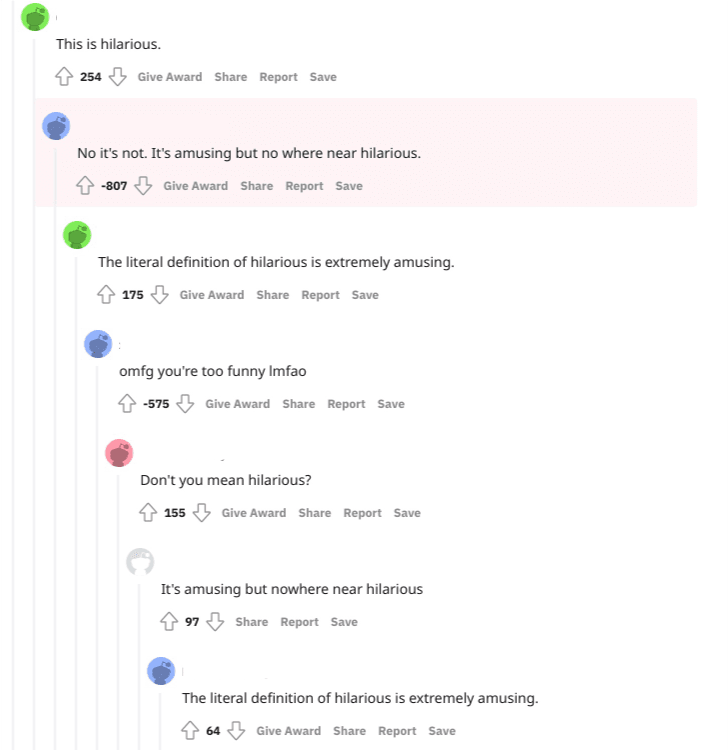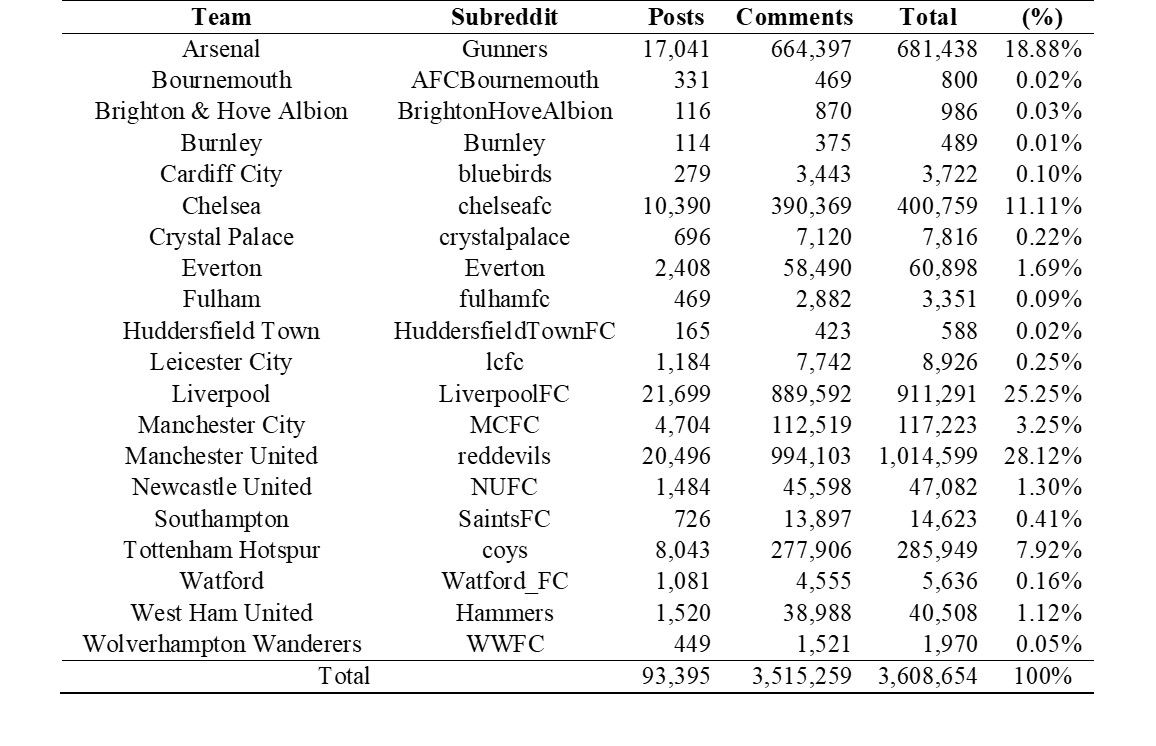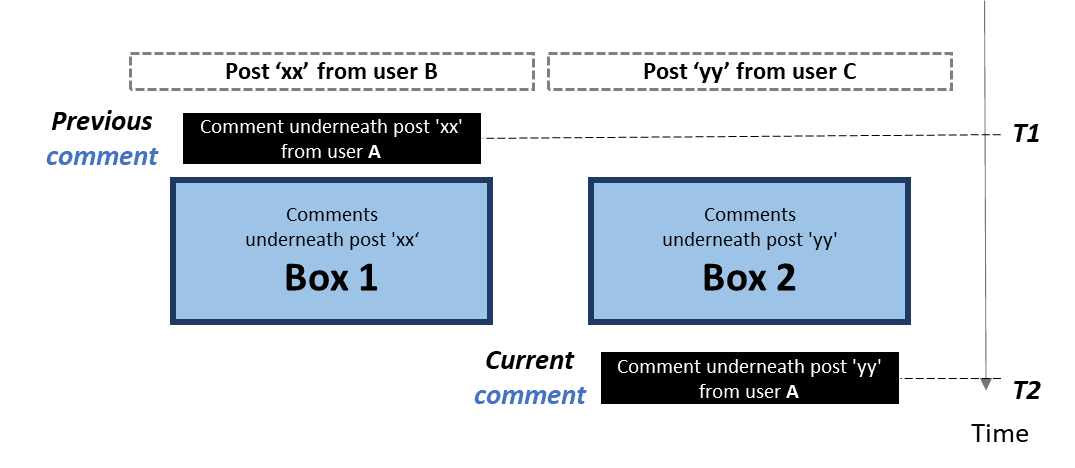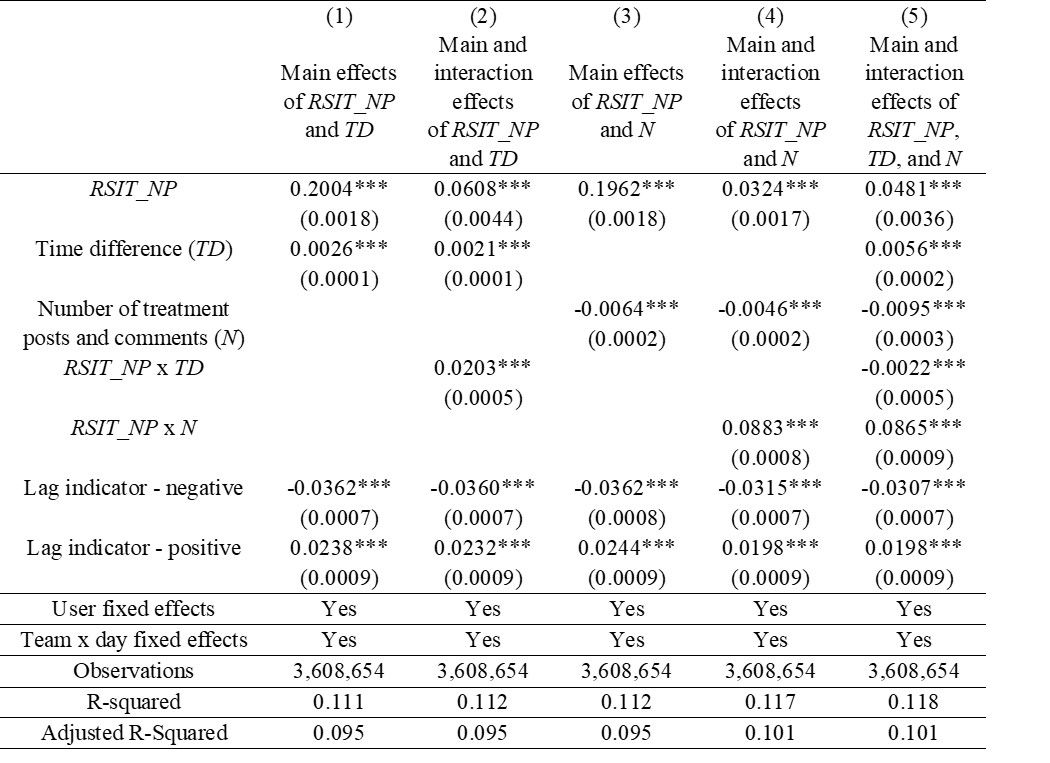
By Kai-lung Hui, Allen Huang, Hyungsoo Lim, and Hyson Lam
Posted on: 2021-10-04

Have you ever felt your emotion was triggered or manipulated by someone on social media or in a discussion forum?
Did you find it frustrating? How did you handle your emotions? Did you respond to those posts or simply ignore them?

Intense emotion leading to meaningless conversations like the example above is not rare on the Internet[i]. Some social media users like to use hostile expressions and offensive languages to flame war and encourage cyberbullying within an online community.
In fact, based on an analysis of online communication, people are more likely to express intensive emotions online due to the anonymity and invisibility of the online environment. Researchers call this the "online disinhibition effect"[ii]. These emotions can become more extreme either positively or negatively.
When social media is full of such intense content, how do polarized sentiments affect our emotions and responses?
Our Research
To examine such spillover of social media sentiment, our researchers conducted a study on the English Premier League (EPL) Football Community using data from Reddit.
The English Premier League (EPL) is without a doubt the world's most popular football league[iii]. Their fans are notorious for their enthusiasm (some would say franticness), especially during the league seasons. Reddit, an American discussion website, has provided an essential platform for football fans to form a community and interact with each other. As a result, the football Reddit community contains a massive amount of data, allowing us to gain useful insights into the dynamics of online communication.
Our data consist of 3.6 million posts or comments from 20 EPL Subreddit from August 1, 2018, to May 31, 2019. The four most famous teams (r/reddevils. r/LiverpoolFC, r/Gunners, and r/chelseafc) account for more than 80% of the posts and comments.

Sentiment Analysis
To capture the post and comment emotions, we applied Sentiment Analysis – one of the Natural Language Processing (NLP) methodologies, to classify the emotions of the user producing the content.
Specifically, we employed TweetEval machine learning model proposed by Barbieri et al. 2020, which specializes in analyzing the sentiments of Tweets.[iv] The algorithm outputs the likelihood of those posts and comments as positive, neutral, or negative. We assign each text to its most likely sentiment category.

Model-Free Evidence – Transition Probability
It turns out nearly half of the posts and comments are neutral (44%). Negative posts and comments rank second (35%) and positive rank the lowest (21%). The general emotion is not as extreme as we had thought, although football fans are more inclined to release negative emotions than celebrate and cheer each other. Under the context of football, what do you expect the sentiment distribution to look like?
Did you know that how you comment and post might depend on what you see, and sometimes the emotions of what you see could affect your next post?
Unlike similar research that treats each post as an independent subject, we trace the comments and posts created by each author to evaluate how their sentiments had changed based on the content they saw in between.

In the illustrative example above, User A leaves comments under two separate posts. We consider all the comments between the source thread and target thread (i.e., boxes 1&2) as a possible influencing factor to the second comment’s sentiment[v].
The table below is the matrix of sentiment change between T1 and T2. We categorize the whole dataset into three treatment groups (baseline, negative and positive) to see how the sentiment between T1 and T2 plays a role. The classification rule is based on the overall sentiment index SIT[vi].

Interestingly, when we compare the difference in probabilities between positive and negative groups, the impact of negative posting is much larger (13.13% vs 9.5 %), which means that exposure to negative content has a much stronger effect on our emotions compared to that of a positive content! Suppose the exposure to negative and positive comments has no impact on the sentiment of the next posting. The transition probability should be similar to the baseline group. However, the result above shows that treatments impact the sentiment of the next posting. If the content in-between is positive, the next posting is more likely to be positive. And likewise for the negative content.
Such a phenomenon could be explained by the negativity bias, which refers to the tendency for negative information to have a greater impact on the brain than equally extreme positive information [vii]. This may be the reason online disinhibition is often regarded as negative or toxic, as it results in a deterioration of our well-being, such as lower levels of social connectedness and flourishing[viii].
Empirical Model
Besides the model-free approach, we estimated a few empirical models to investigate the spillover effect (see the main results table below).
The dependent variable of the models is the difference between the likelihood for the posts or comments to be positive and negative. A positive index means the post is more likely to be positive. Similarly, a negative index means the post is more likely to be negative.
Of course, it is possible that concurrent events, for example, game outcomes or news about major players such as injury, can affect both user’s next comment and the posting before that. We use the sentiment of new posts created between the two user comments and outside the source and target threads to measure these concurrent events. We regress SIT on concurrent events and use the residuals to form a new independent variable, RSIT_NP.
With other independent variables TD (time difference between two postings) and N (number of treatment posts and comments), we build a series of regression models with different combinations of interaction effects. All models include user and day fixed effects, with the sentiment of the users' previous posts as a lagged variable to capture the intrinsic sentiment of the threads or the user’s baseline emotion level.
The result in the table below shows that RSIT_NP has a significant positive effect across all models, meaning the sentiment of the posts becomes more positive (negative) as the sentiment of the treatment posts in-between is more positive (negative). For the time difference, TD, if the gap between two postings is larger, the sentiment would become more positive. For the number of treatment posts and comments, N, more posts would lead to more negative sentiment.
Regarding the interactions among those three variables, we find strong evidence that the impact of RSIT_NP itself is intensified when there are more posts and comments (i.e., N is larger), and when the user generates the next posting quickly (i.e., when TD is smaller).

Notes. Robust standard errors clustered by user are in parentheses. * p < 0.1; ** p < 0.05; *** p < 0.01. Taking a natural log transformation to N and TD. TD is measured in seconds.
Conclusion
Our research shows that the sentiment of our posts can be influenced by other people's emotions on social media, meaning that emotions on the internet are contagious and can quickly escalate. Users of social media should be aware of the spillover effect and avoid being manipulated by others. If we want to be responsible netizens, we must learn how to deal with a polarized online environment and offensive conversations.
________________________________________
[i] Reddit conversation retrieved from r/gaming on Reddit.
[ii] The online disinhibition effect is first introduced by Prof. John Suler at Rider University in 2004.
[iii] Photo retrieved from https://unsplash.com/photos/r-xKieMqL34.
[iv] For more information related to the TweetEval model, please refer to https://github.com/cardiffnlp/tweeteval.
[v]The observation would be excluded if the time difference between comments of the same author exceeds three days.
[vi] SIT = (number of positive posts - number of negative posts) / number of total posts. If the SIT of in-between posts is below the 20th percentile, it would be assigned to the negative treatment group. The upper 20th percentile is assigned to the positive treatment group. All others are in the baseline group.
[vii] According to Cacioppo et al. (2014) The negativity bias: Conceptualization, quantification, and individual differences
[viii] According to Stuart & Scott (2021), The Measure of Online Disinhibition (MOD): Assessing perceptions of reductions in restraint in the online environment
Prof. Yang highlights enterprise AI breakthrough at HKUST Unicorn Day, showcasing LayerZero AI's custom embedding technology.
Prof. Yi Yang, Director of the Center, joins industry leaders in a panel discussion on cutting-edge GenAI risk management strategies during the launch of the second cohort of the Generative AI (GenAI) Sandbox initiative held on 28 Apr 2025.
At the closing Pitch Fest of the first-ever Web3 Ideathon, top tertiary student teams showcased their groundbreaking Web3 concepts to industry experts.